Modern energy-saving house — benefits and features
In an era where energy conservation and reducing environmental impact are top priorities, the concept of an "energy-efficient home" becomes increasingly important, surpassing its conventional definition. Therefore, understanding what makes a home energy-efficient becomes a key task for modern builders, architects, and consumers. Let's delve deeper into this concept and define what forms the basis of an energy-efficient home and why this becomes extremely important in the context of our modern needs and requirements.
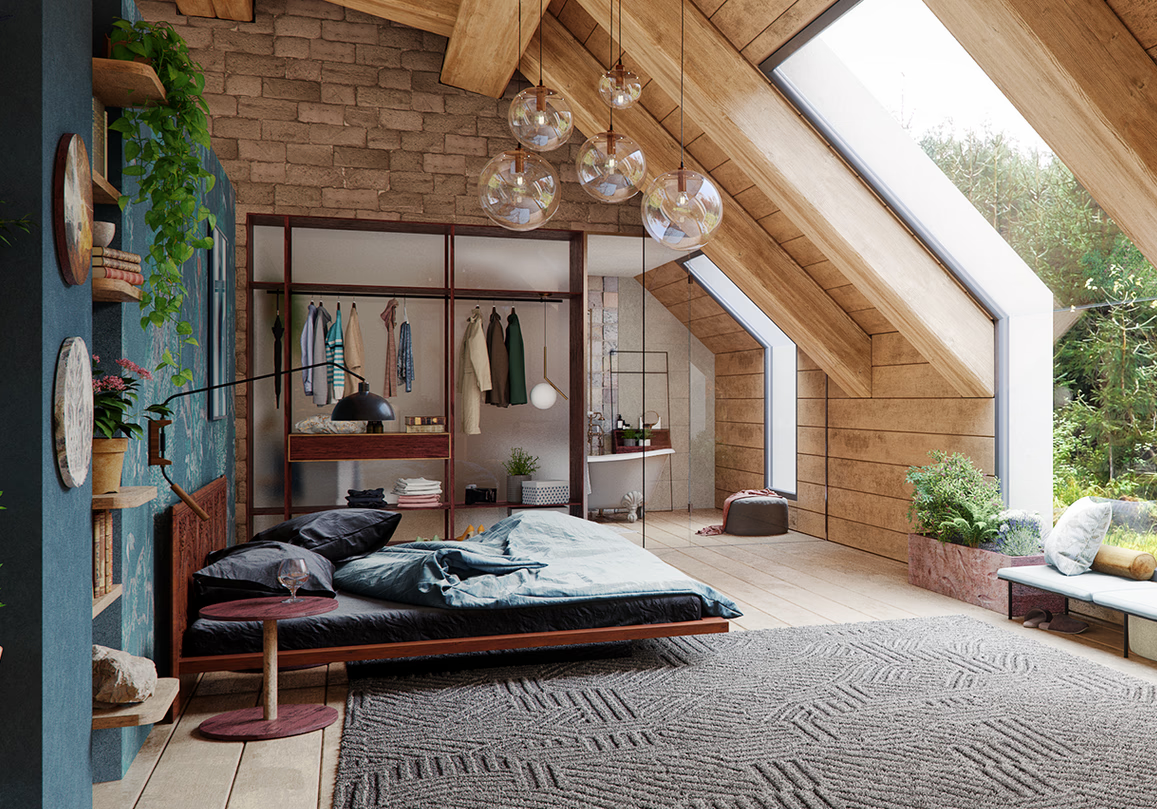
Definition of an energy-efficient house
The definition of an energy-efficient house contains many aspects, one of which is the calculation of the energy efficiency of the building. This calculation takes into account various factors such as thermal insulation, heating and air conditioning efficiency, use of renewable energy sources, and so on. Considering these parameters, the energy consumption level of the house and its impact on the environment can be accurately determined. Such a calculation not only allows for the optimization of energy costs but also contributes to the reduction of CO2 emissions and other harmful substances.
Energy-efficient houses can include various types of housing designed and built to reduce energy consumption. Here are some types of energy-efficient houses:
- Passive house: a building that maximizes the use of natural heat and light sources to provide comfortable conditions inside.
- Zero Energy Building: a house that produces as much energy as it consumes, using solar panels or other renewable energy sources.
- Active house: a building that produces more energy than it consumes, for example, using wind turbines or solar systems.
These types of houses are designed with high energy efficiency and reduced negative impact on the environment in mind.
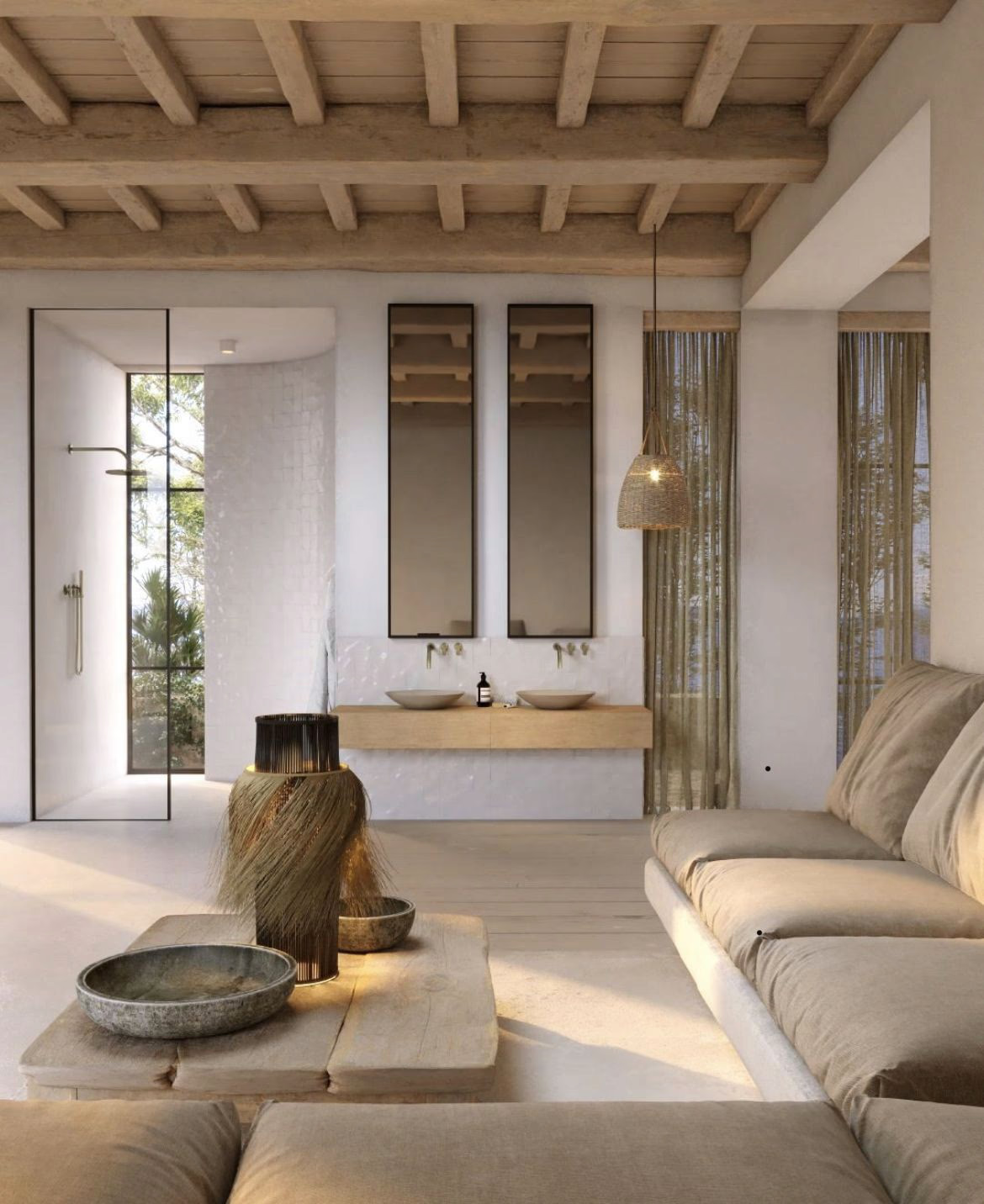
Relevance of energy efficiency in construction
The issue of energy efficiency in construction is becoming increasingly relevant in the modern world for the following reasons:
- Resource conservation: Reducing energy consumption in construction promotes resource savings and reduced CO2 emissions into the atmosphere.
- Economic benefits: Energy-efficient buildings allow owners to significantly reduce utility costs.
- Steady increase in energy prices: The constant rise in energy prices makes energy efficiency more attractive to consumers.
- Legislation: Many countries are implementing strict standards for energy-efficient construction, which compels developers to consider this aspect.
- Health and comfort: Energy-efficient homes provide a better indoor microclimate, which positively affects the health of the residents.
Therefore, it is important to consider energy efficiency issues when constructing new buildings or renovating existing ones.
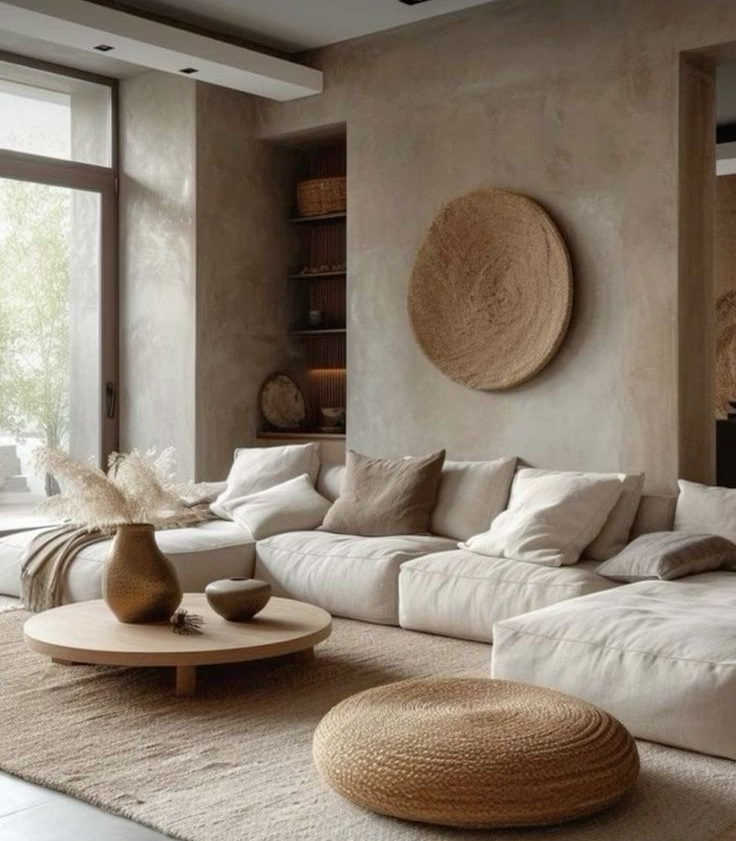
Advantages of Energy-Efficient Homes
In the modern world, where environmental issues are becoming increasingly relevant, energy-efficient homes are gaining well-deserved popularity as an important step towards sustainable living. They not only consume less energy, but also offer homeowners a multitude of benefits, reflected in utility bills and the overall state of the environment.
Let's consider some of the most significant advantages that make energy-efficient homes indispensable in today's world.
Energy-efficient homes consume significantly less energy for heating, air conditioning, and lighting, allowing their owners to drastically reduce utility bills.
Energy-efficient homes have a higher market value due to their low operating costs and high popularity among buyers.
Investing in energy efficiency can lead to significant economic benefits in the future and allow the project to pay for itself within 10-15 years of operation, through substantial savings.
Reduced expenses on utilities help owners of energy-efficient homes maintain financial stability even in the face of rising energy prices.
Energy-efficient homes are far more advantageous than conventional ones, both in terms of energy savings and financial perspective.
Eco-friendly energy-efficient homes built using straw panels significantly reduce CO2 emissions into the atmosphere, as a result of using natural raw material - straw, which is often burned in fields in most cases, and the absence of the need to establish enterprises for the production of building material - walls, using chemical processes. Straw panels are a renewable material that requires less energy for production compared to traditional building materials, allowing a reduction in CO2 emissions during their production.
Frame houses built from straw panels have high thermal insulation, allowing a significant reduction in energy consumption for heating and air conditioning, thereby reducing CO2 emissions from energy consumption. Thus, energy-efficient eco-homes made from straw panels can be an important step in reducing CO2 emissions and improving the ecological sustainability of the construction industry.
Frame houses made from straw panels indeed help conserve resources for several reasons: Straw panels are made from renewable material - wheat straw, which can be recycled and reused, helping reduce the need for the extraction and use of non-renewable resources. The production of straw panels typically requires less chemicals and harmful compounds compared to other building materials, allowing the preservation of natural resources and reducing the negative impact on the environment. Thus, frame houses made from straw panels contribute to the rational use of resources and help reduce the negative impact of construction on the environment.
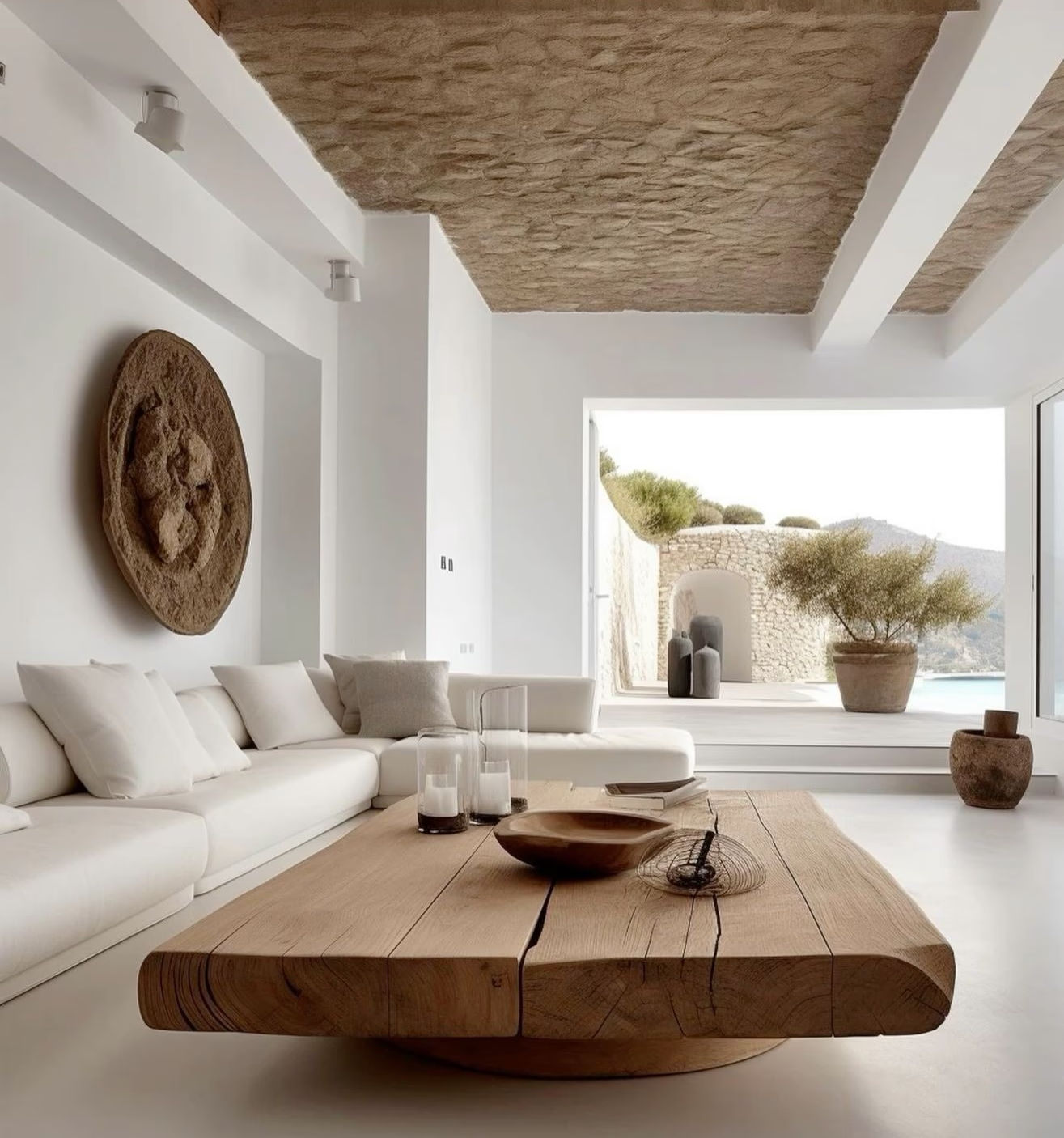
Main characteristics of energy-efficient houses
Energy-saving houses are correctly designed in terms of the sides of the world, have well-insulated structures, energy-saving double-glazed windows, sufficient sunlight, a heat recovery ventilation system, allowing heat to be stored in the house in winter and coolness in summer and significantly reducing heating and air conditioning costs.
Energy-efficient houses minimize heat loss through walls, roof, and floor due to the tightness of the structures and effective insulation. Well-insulated construction of the house is reliably protected from cold bridges, the formation of cold zones in winter, and solar overheating of materials in summer. It maintains a comfortable air temperature and humidity in the house for a long time, significantly reducing heating and air conditioning costs. The use of straw panels significantly reduces external noise, creating more comfortable living conditions.
Energy-efficient houses are divided into energy consumption classes. Class A+ includes houses consuming up to 30 kWh per m2 per year, and houses consuming up to 15 kWh are classified as Passive House.
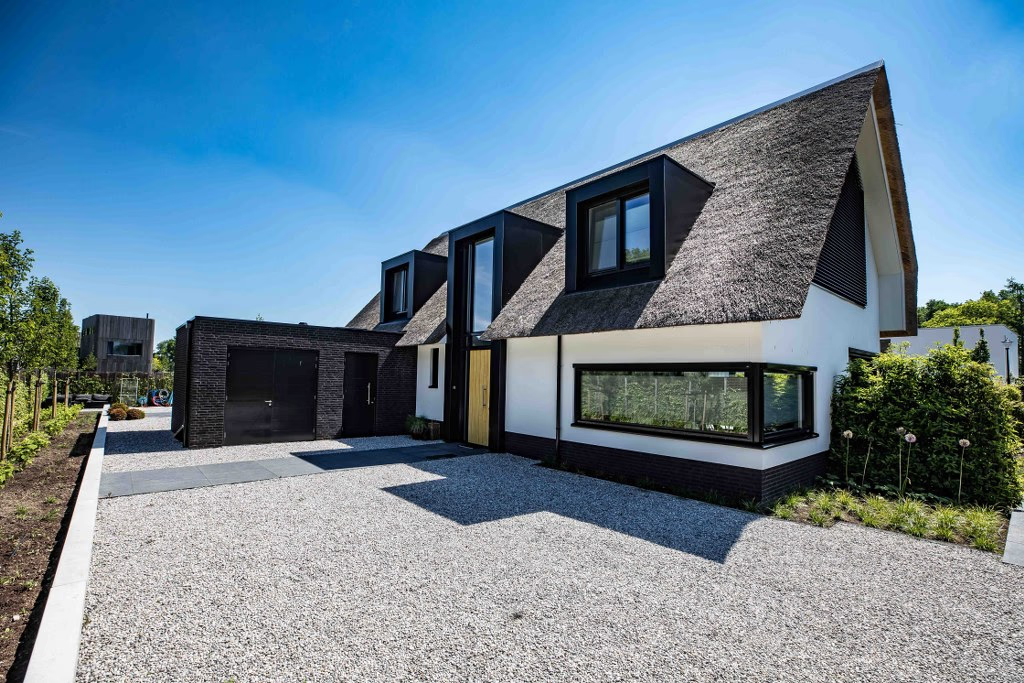
Microclimate features and benefits of Eco houses
Straw houses create a special soft microclimate that affects well-being, energy restoration, and relaxation. Through the capillary structure, densely pressed straw in a wooden frame and further wall treatment with a clay plaster layer of 50 mm thickness, the wall self-regulates air humidity and prevents the formation of mold and mildew. Natural wall microfiltration provides air exchange in the room within 10-12 hours, which contributes to improving air quality in terms of oxygen content. Energy efficiency and natural comfort of the living microclimate increase the value of real estate and extend the service life of the house.
Technologies ensuring energy efficiency
The construction materials market is constantly evolving towards reducing raw material costs, better energy efficiency and airtightness, and longer material service life. But there are currently no better materials provided by nature itself: hemp concrete, clay, wood, straw, and reed. It is based on these principles that the trends in modern ethnic and ecological architecture are developing.
Straw is the best building material in the world. Many companies in Europe build houses with straw panels. France is the leader in the number of built houses, with over 5,000 houses built, including a kindergarten, clinic, and fire station. Straw panels have the highest insulation values among all building materials, R-8.22, and sound insulation values of 56 dB, which allows for the construction of recording studios. Compressed straw, up to a density of 120 kg per m³, has a low oxygen content and does not support combustion, and when treated with a clay protective plaster layer, withstands temperatures above 1000°C for more than an hour.
Using energy-efficient heating systems allows for a comfortable soft microclimate in straw houses, due to the uniform temperature distribution in the rooms, without noticeable temperature fluctuations. Modern systems allow for winter heating and summer cooling, requiring significantly less electricity and saving annual house maintenance costs.
Using renewable energy sources improves the building's energy efficiency. Among the more accessible options today are solar panels, wind turbines, and geothermal systems. By using such systems, the house can be energy-efficient or autonomous, reducing its impact on the environment.
Solar panels can meet the needs of a house up to 200 m², but for their installation, it is necessary to determine the number of sunny days in a given region, the sunny side, and the appropriate roof slope during the house design stage.
Wind turbines can be installed as additional equipment or as standalone wind generation systems in regions with a large number of prolonged winds.
Energy-efficient house systems also include air exchange recovery systems, which purify the air from microparticles and heat it to room temperature. Such systems also impact house energy efficiency and provide oxygen saturation without additional room ventilation.
Conclusion
Considering modern energy-efficient systems and the combination of natural materials that provide the best well-being quality in the house, energy resource savings, and environmental preservation, we can confidently say that our future lies in straw construction. Perceiving the surrounding nature and one's existence as part of the ecosystem provides an understanding of choosing one's house and lifestyle philosophy.
Today, with straw panels, it is possible to build not only houses and eco-settlements, but also to consider this material when constructing high-rise buildings on a non-load-bearing concrete structure. This significantly contributes to savings in electricity supply, consumption, heating, material durability, provides the best external wall sound insulation, and greatly improves the microclimate in the house.





